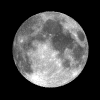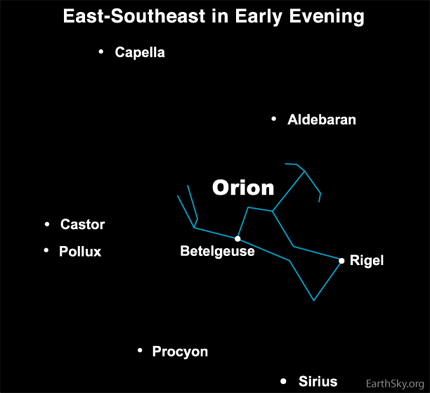Courtesy of EarthSky
A Clear Voice for Science
Visit EarthSky at
www.EarthSky.org

 Tonight’s chart covers a wider area of sky than what we typically show. It is in answer to a reader in Nashville, who wrote, I have heard mention of the Winter Circle of Stars. Could you list the stars in this circle?
Tonight’s chart covers a wider area of sky than what we typically show. It is in answer to a reader in Nashville, who wrote, I have heard mention of the Winter Circle of Stars. Could you list the stars in this circle?
You will find these stars at this time of year by looking east-southeast at early to mid evening.
Again, this is a large pattern and covers a wide area of sky, but as always, it is easiest to start small … in this case, by finding the prominent constellation Orion the Hunter. Orion is very noticeable on these winter evenings. If you pick out any pattern of stars in the east-southeast at nightfall, it will probably be part of Orion. The Winter Circle stars surround Orion. They don’t form a perfect circle … is anything ever perfect? Try starting at Capella and moving clockwise to Aldebaran, Rigel, Sirius, Procyon, Pollux and Castor.
This pattern of stars is not a constellation. It is many separate stars in different constellations. In other words, it is what has called an asterism. These same bright stars can be seen before dawn every late summer and early fall. In addition, they can be seen in the evening every winter. Hence the name Winter Circle.
By the way, Betelgeuse, in the shoulder of the constellation Orion, is not part of the Winter Circle. However, you will notice it in this part of the sky, in the middle of the Circle. It appears reddish in color.
The stars of the Winter Circle move westward across the sky during the night, adorning these cold January nights till well after midnight!
Written by EarthSky
Astronomy Picture of the Day from NASA/JPL
U.S. Naval Observator Astronomical Information center
The York County Astronomical Society
 Print This Post
Print This Post








